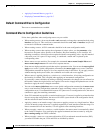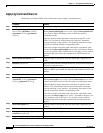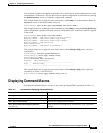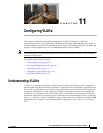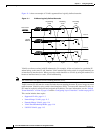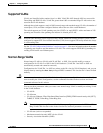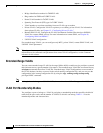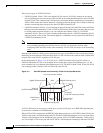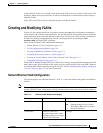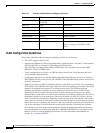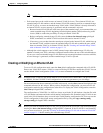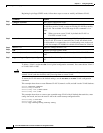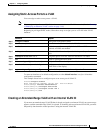
11-4
Cisco ME 3400 Ethernet Access Switch Software Configuration Guide
OL-9639-06
Chapter 11 Configuring VLANs
Understanding VLANs
• Bridge identification number for TrBRF VLANs
• Ring number for FDDI and TrCRF VLANs
• Parent VLAN number for TrCRF VLANs
• Spanning Tree Protocol (STP) type for TrCRF VLANs
• VLAN number to use when translating from one VLAN type to another
• Private VLAN. Configure the VLAN as a primary or secondary private VLAN. For information
about private VLANs, see
Chapter 12, “Configuring Private VLANs.”
• Remote SPAN VLAN. Configure the VLAN as the Remote Switched Port Analyzer (RSPAN)
VLAN for a remote SPAN session. For more information on remote SPAN, see
Chapter 26,
“Configuring SPAN and RSPAN.”
• UNI-ENI VLAN configuration
For extended-range VLANs, you can configure only MTU, private VLAN, remote SPAN VLAN, and
UNI-ENI VLAN parameters.
Note This chapter does not provide configuration details for most of these parameters. For complete
information on the commands and parameters that control VLAN configuration, see the command
reference for this release.
Extended-Range VLANs
You can create extended-range VLANs (in the range 1006 to 4094) to enable service providers to extend
their infrastructure to a greater number of customers. The extended-range VLAN IDs are allowed for any
switchport commands that allow VLAN IDs. Extended-range VLAN configurations are not stored in
the VLAN database, but they are stored in the switch running configuration file, and you can save the
configuration in the startup configuration file by using the copy running-config startup-config
privileged EXEC command.
Note Although the switch supports 4094 VLAN IDs, the actual number of VLANs supported is 1005.
VLAN Port Membership Modes
You configure a port to belong to a VLAN by assigning a membership mode that specifies the kind of
traffic that the port carries and the number of VLANs to which it can belong.
Table 11-1 lists the
membership modes and characteristics.



